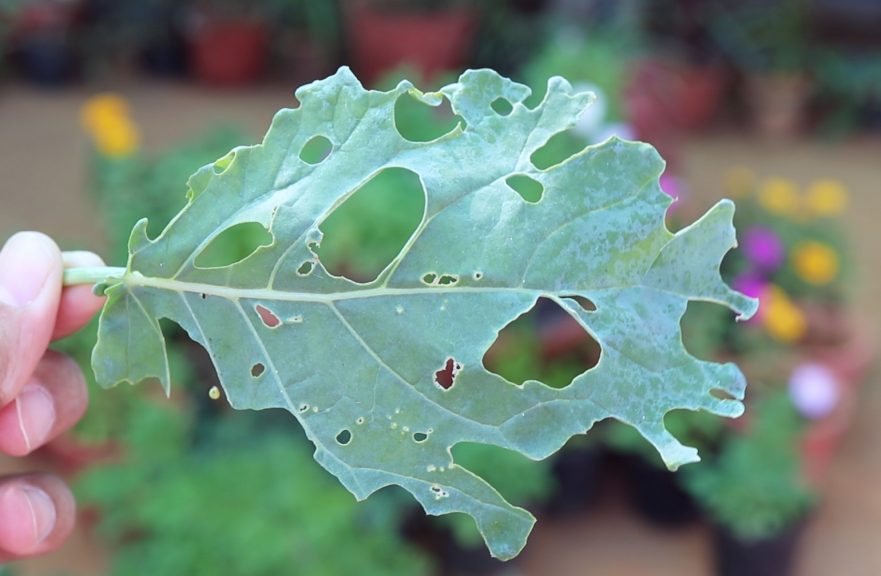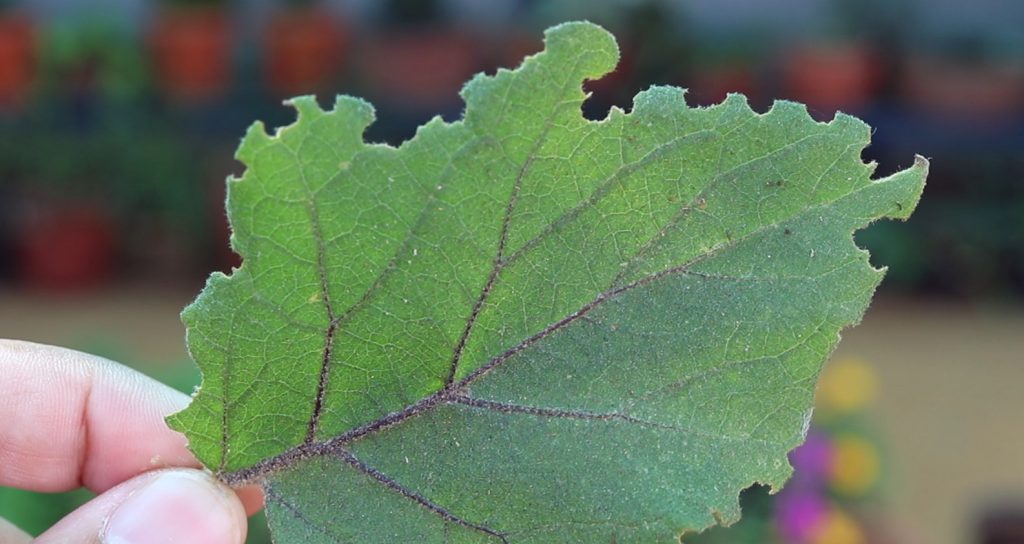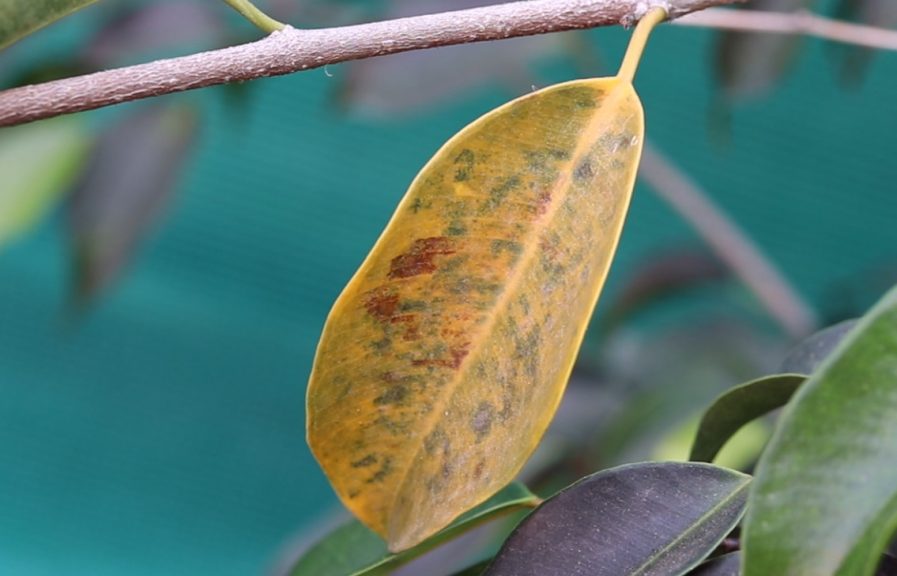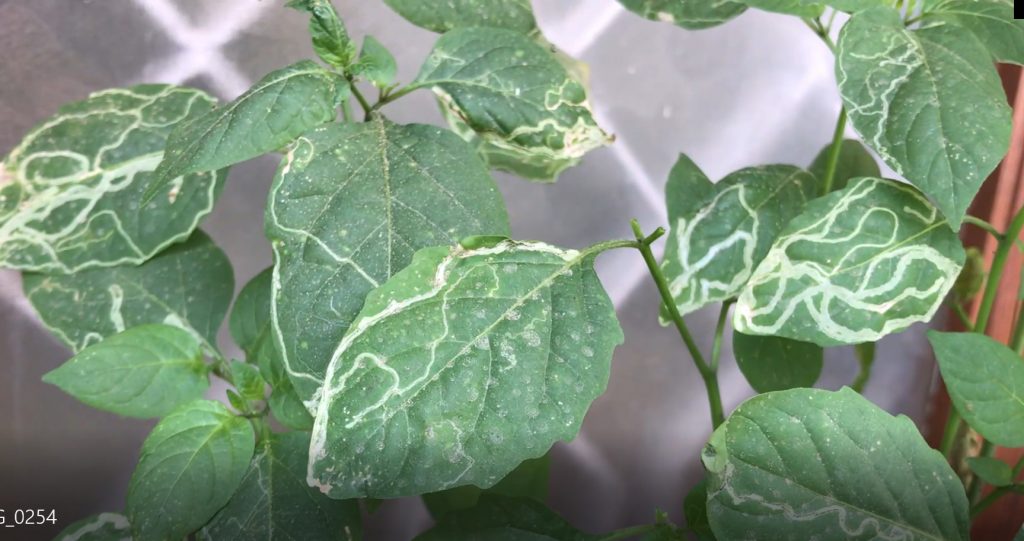When you see leaves of your plant curling – whether upwards or downwards, your plants are trying to tell you something! The first thing that should come in your mind is: the PLANT IS IN STRESS. Stress is more commonly seen in younger plants than the more established or mature plants.
Now, let’s look into different patterns of leaf curls with scientific concepts and reasons for each of these and solutions or remedies to be applied to treat the problem of leaf curl.
- Leaf margins curling downwards and drooping down – like wilting: The Common Cause of this is Under watering and excessive heat like in summer season. This indicates your plant is sad and stressed and requires Attention! This is a sign of too much heat and under watering. The solution is pretty simple! – Just water the plant thoroughly and you will see them come back to normal in few minutes.
- Leaf tips or margins curling upwards and folding. Upwards curling occurs because of environmental problems rather than nutrient problems. This could either be due to heat stress or wind stress. Leaves Curl upwards or fold upwards in an attempt to stop exposing or reducing the surface of the leaf for photosynthesis and reducing transpiration and hence overall dehydration. But one problem here is once it curls upwards, it’s not going to uncurl or come back to its normal shape. If the whole plant is suffering from this, you need to worry. But if it’s only few leaves curling at lower portions of the plant, not to worry, if younger shoots are healthy. What’s the Remedy for this leaf curl? Just shift the plant under a shade net away from too much hot sun and mist the plant with some water once or twice a day.

- Leaves curling down or drooping underneath itself with some yellowing. – A Sign of Over watering and an early indication of root rot. To save the plant, take out the root ball and repot in a fully dry soil for immediate solution and do not water for at least 2 days. You can also add some antifungal into the potting mix or in water.
- Leaf Curling with wrinkling and unhealthy look with patchy or punctate yellow spots or specks and visible pests like aphids, mealy bugs, etc – obviously indicate – pest attack is the cause of curling. Spraying neem oil weekly once will help in prevention as well as treatment.
- Leaf Curl Virus also needs a special mention. This commonly affects plants like peppers and tomatoes. If you come across this leaf curl and you have ruled out the other causes of leaf curl as discussed, then you should dispose the plant to prevent spread to other plants nearby.

- Nutritional deficiency can cause Leaf Curling. The Fact you must remember is: about 90% of all leaf curling or leaf injury like yellowing and so on can be attributed to environmental issues – not nutritional.
The main nutritional causes of leaf curling are Magnesium and Manganese Deficiency.
Magnesium Deficiency Curling shows on the middle to older leaves with patching yellowing as well. But the leaf veins stay green (inter-veinal chlorosis).
Manganese deficiency curling first starts showing at younger leaves. So this is how you differentiate between the two.
So, the first thing you need to do to support this diagnosis of nutritional cause of leaf curling is a Soil PH Test. Too much alkaline soil will inhibit the absorption of these micro nutrients by the roots. Simply adding micro nutrient powder will not help. First test the PH and correct the PH. You can make it Acidic by adding Alum or Vinegar.
Then, You can also Foliar Spray with Epsom salt solution if magnesium deficiency is suspected.
How would you feel, when oneday on your early morning garden inspection you find part of your garden disappeared while you slept, or realize your flower buds are torn apart and very badly damaged?
I am sure after seeing this damage, Your first instinct is likely to spray some powerful chemical pesticide all over your plants to kill those culprits without even investigating further. This is not a right decision. Please Spend a little time to find out what’s eating your plants and then take necessary action particularly prescribed for that pest or insect.
Yes, Today we will look into Identifying those common pests by scanning their leaf signatures – that’s the leaf damage pattern they leave after feeding on your plants. So lets begin.

Chewed Leaves or Slime Trails
- Chewed Leaves or Slime Trails: If you seeirregular-shaped holes in the leaf (but not along the edges) and if you seeslime trails or lines, then most likely the Culprits are Slugs and Snails. So Whats the Solution? There are lot ofremedies for slugs and snails but Beer Trap is the most effective oneconsidered by many. Pour some beer in a saucer and leave it overnight. Thisattracts and kills these creatures. Chewed Leaves along the edges: Leafcutting bees are the culprits. So whats the solution? Generally unless its tooextensive damage, you need not take any step to kill or drive away these bees,because they are beneficial insects and required for pollination in yourgarden.
- Chewed Leaves with central holes in betweenveins – like Skeletonised leaves. The culprit here is Caterpillars if largerholes, then the other insects which can cause this pattern are Beetles, Earwigsand Saw flies. So whats the remedy. For caterpillars, hand pick and eliminatethem including their eggs from the leaves. After doing this apply a neem oil +soap solution weekly twice. 10 ml neem oil + 10 drops or 10 ml of liquid soapor shampoo and spray it thoroughly including the undersides of the leaves.

Skeletonised leaves
Discolored Leaves + Sucking Damage: Thisis commonly caused by Thrips and Spider Mites, common thrips are the CubanLaurel Thrips. As you can see here, the leaf is discoloured and then foldedonto itself to form a pouch or cover these creatures and its eggs. If leftuntreated, these thrips will multiply drastically and can cause a considerabledamage to your plant. So Whats thesolution? You can use the same Neem oil + soap spray weekly twice or can addanother oil like clove oil or eucalyptus oil if they are too extensive. If theystill persist, then go for a chemical sprays like those containing Imidaclopridas the last resort. If you still want organic solution like me, consideranother option called diatomaceous earth (DE).

Zig zag leaf mining Pattern: Obviouslythese are called Leaf miners. Leafminers are very tiny larvae of a variety ofinsects like flies, moths and beetles. Leafminers do not actually cause majorinjury to the infested plant, but rather give an unattractive look to theplant. This mining pattern of zig zag lines on the leaves are produced as thesetiny larvae burry and eat along the infested leaves. If you want to control these, Neem oil is thebest solution. You can watch my detailed video on leaf miners and its remediesfrom HERE.

Sucking Damage and Deformed Leaves and Leaf Curls: Common Sucking pests are Aphids,Whiteflies and Mealy Bugs. The mealy bugs are very common and are found suckingthe new growth and tips. Infact, Mealybugs as well as Aphids have a symbioticrelationship with Ants which protect these pests from predators and also carrythem to the plants. The Ants in turn get the honeydew sugars excreted out oftheir anus as their gift. So, Whats the Solution? I have been using theMagic organic mix containing multiple ingredients along with neem oil tocontrol these. But they need a weekly spray with this solution depending on theseverity. There are lot of solutions to these pests including alcohol basedsprays, neem oil and many others. Please check a video on this topic HERE.

Leaf Galls or Leaf Bumps: This is astrange and rare pattern which presents as tumour like boils on the leafsurface. This is considered to be due to irritation or stimulation of plantcells due to feeding or egg-laying by insects such as aphids, wasps and mites.

